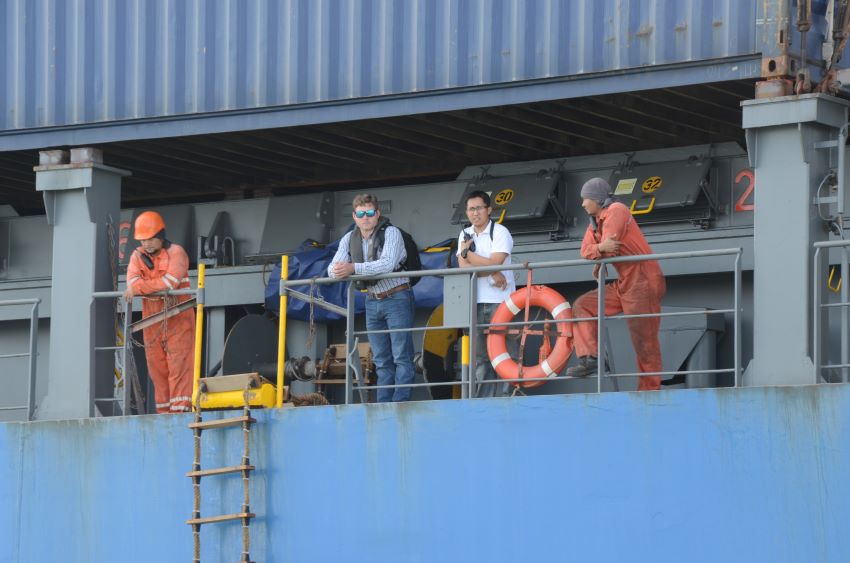Reviving the U.S. Merchant Marine
 Less than 200 U.S.-flagged ships account for just 0.4% of the estimated 55,000 sea-going ships serving the global economy. Out of 80,000 U.S. port calls each year, only a very small percentage are by U.S.-registered ships. Most Americans don’t realize this and probably don’t care, as long as the economy is good and the country is at peace. But should we care?
Less than 200 U.S.-flagged ships account for just 0.4% of the estimated 55,000 sea-going ships serving the global economy. Out of 80,000 U.S. port calls each year, only a very small percentage are by U.S.-registered ships. Most Americans don’t realize this and probably don’t care, as long as the economy is good and the country is at peace. But should we care?
Throughout my USCG career I never questioned our dependency on foreign ships and happily interacted mostly with American merchant mariners. The U.S. has an incredible domestic maritime community who provide perfectly appropriate port services, inland and coastal transportation, pilotage, offshore, research, and fishing for the U.S. economy. Generations of Americans before us worked hard and fought for our freedom on the seas and orderly international conventions for our international trade. Beyond our coasts, U.S.-registered commercial ships have become a rarity. Commercial ocean-going ships are critical for national security, economic security, food and energy security, climate security and workforce security. Shouldn’t there be more Americans on the high seas?
Today’s international maritime is in transition. It’s more transparent. There’s beginning to be more public interest, new routes, new fuels, new technologies and stronger governance. Its ownership is fully globalized, highly competitive and efficient, and very impactful to supply chains, port infrastructure, greenhouse gas emissions, and trade currency. However, it’s also under stress due to the seafarer shortage, embattled seaways, dark fleets, and maritime power competition. Despite our ocean-facing geographic advantage, an economy that’s largely dependent on shipping, and the immeasurable potential of a “blue economy” beyond our shorelines, Americans seem to be passively accepting the status quo of having no particular national maritime strategy.
Despite most American’s “sea blindness”, Congress is beginning to act. A 2023 line item in the National Defense Authorization Act finally required the U.S. Maritime Administration (“MARAD”) to prepare a national maritime strategy. The Center for Naval Analysis will complete a study for MARAD’s still-to-be drafted strategy this year. It will include recommendations and compelling investment justifications based on 5 principles: national security, economic security, food and energy security, climate security and workforce security.
Simultaneously, Arizona Senator Mark Kelly and Florida Congressman Mike Waltz are leading a bipartisan, bicameral effort to revive U.S. maritime, beginning first, with the Strategic Ports Reporting Act to identify the balance of influence within the world’s most strategic ports, and second, with a Ships for America Act to propose measures to revive U.S. maritime commercial strength. The Ships for America Act is expected to include such items as the appointment of a maritime security advisor to the president, a maritime security trust fund, a strategic commercial fleet program, various cargo preference provisions, regulatory reforms, financing for U.S. shipbuilding, various provisions for building and licensing the maritime workforce, and tax incentives for ship owners and mariners.
Decades of decline may soon be reversed for U.S merchant mariners and U.S. commercial presence on the high seas. The biggest challenge will be reversing the American public’s indifference to the maritime industry’s strategic importance to their everyday lives and future prosperity. After all, if there’s no shipping, there’s no shopping.
About the Author

RADM James Watson, USCG (Ret.)
J.A. WatsonIV LLC
jim.watson88111@gmail.com
James Watson is a retired Rear Admiral. He is currently an independent consultant providing business development services to maritime clients. He is also a co-author of Zero Point Four and a founding member of Maritime Accelerator for Resilience (MAR).
